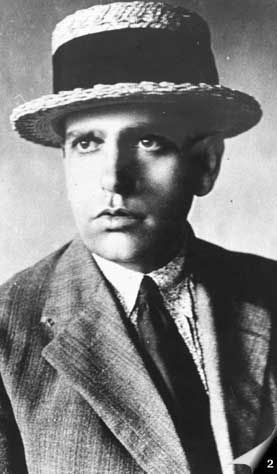Oswald de Andrade facts for kids
Quick facts for kids
Oswald de Andrade
|
|
|---|---|

Andrade in 1920
|
|
| Born | José Oswald de Souza Andrade January 11, 1890 São Paulo, Brazil |
| Died | October 22, 1954 (aged 64) São Paulo, Brazil |
| Occupation | poet and polemicist |
| Literary movement | Founder of Brazilian modernism; member of the Group of Five |
| Notable works |
|
José Oswald de Souza Andrade (born January 11, 1890 – died October 22, 1954) was an important Brazilian writer. He was a poet, a novelist, and a critic of culture. Oswald de Andrade was born, lived most of his life, and passed away in São Paulo, Brazil.
He was one of the main people who started modernism in Brazil. Modernism was a new way of thinking about art and culture. He was also part of a group called the Group of Five. This group included other famous artists like Mário de Andrade, Anita Malfatti, Tarsila do Amaral, and Menotti del Picchia. Oswald de Andrade also took part in the Semana de Arte Moderna (Modern Art Week), which was a very important event for modern art in Brazil.
Contents
Oswald's Life and Work
Oswald de Andrade came from a rich family in São Paulo. He used his money to help many other artists and their projects. He helped publish important books and supported painters like Tarsila do Amaral and Lasar Segall.
He was known for his strong opinions and sometimes spoke out very directly. He joined a political party in 1931 but left it later.
The Anthropophagist Manifesto
One of Oswald de Andrade's most famous works is his Manifesto Antropófago (Anthropophagist Manifesto). He published it in 1928. This manifesto had a very interesting idea. It suggested that countries that had been colonized, like Brazil, should "eat" the culture of their colonizers. But they should not just copy it. Instead, they should take it in and make it their own in a new, unique way.
The manifesto was inspired by big thinkers like Michel de Montaigne, Karl Marx, and Sigmund Freud. It also took ideas from other famous manifestos, like the Manifesto of the Communist Party.
What is Anthropophagy?
Oswald de Andrade explained that "Anthropophagy" in his manifesto was different from simple cannibalism. He saw it as a special ritual practice. Some indigenous peoples in Brazil used this ritual to take in the worldview of an enemy. By "eating" the enemy, they would gain their strength or knowledge.
Oswald de Andrade used this idea to talk about culture. He wanted Brazil to take ideas from European culture. But instead of just following Europe, Brazil should change these ideas to fit its own unique spirit. This way, Brazil could show its own strength and creativity.
"Tupi or not Tupi: that is the question"
A very famous line from the manifesto is "Tupi or not Tupi: that is the question." This line plays on a famous quote from Shakespeare. It celebrates the Tupi people, who were sometimes wrongly accused of cannibalism. By using Shakespeare's words and linking them to the Tupi, Oswald de Andrade was showing how Brazil could "eat" European culture and make it Brazilian.
The idea of Antropofagia had a big impact on Brazilian culture. It influenced theater, music (like Tropicalismo), and movies. Some people think it was Brazil's most original and important artistic movement.
Selected Works
- Alma (1922)
- Manifesto Pau-Brasil (1924)
- Pau-brasil (poems, 1925)
- Estrela de absinto (1927)
- Manifesto Antropófago (1928)
- Serafim Ponte Grande (1933)
- Meu Testamento (1944)
- A Arcádia e a Inconfidência (1945)
- A Crise da Filosofia Messiânica (1950)
- Um Aspecto Antropofágico da Cultura Brasileira: O Homem Cordial (1950)
- A Marcha das Utopias (1953)
See also
 In Spanish: Oswald de Andrade para niños
In Spanish: Oswald de Andrade para niños

